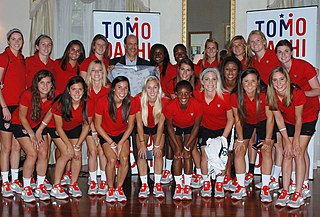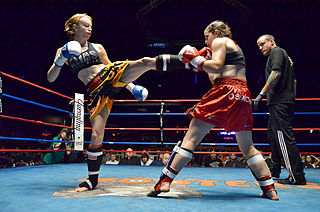 W
WWomen's sports, both amateur and professional, have existed throughout the world for centuries in all varieties of sports. Female participation and popularity in sports increased dramatically in the 20th century, especially in the last quarter-century, reflecting changes in modern societies that emphasize gender parity. Although the level of participation and performance still varies greatly by country and by sport, women's sports are generally accepted throughout the world today.
 W
WProfessional athletes are distinguished from amateur athletes by virtue of being paid enough to earn a living. Throughout the world, most top female athletes are not paid, and work full-time or part-time jobs in addition to their training, practice and competition schedules. Women's professional sports organizations defy this trend. Such organizations are relatively new, and are most common in very economically developed countries, where investors are available to buy teams, and businesses can afford to sponsor them in exchange for publicity and promotion of their products. Very few governments support professional sports, male or female.
 W
WThe 20th century saw multiple trends and changes in women's fitness culture.
 W
WThe Billie Awards was an American awards ceremony that focused on positive portrayals of female athletes in visual media. It was held in Los Angeles, California by Billie Jean King's The Women's Sports Foundation from 2006-2009.
 W
WEscaramuza charra is the only female equestrian event in the Mexican charrería. The escaramuza means "skirmish" and consists of a team riding horses in choreographed synchronized maneuvers to music. The women ride side-saddle and wear traditional Mexican outfit that include sombreros, dresses, and matching accessories. A team consists of 16 women, but only 8 ride at a time. The routine is practiced in a lienzo, or a circular arena.
 W
WWomen's fencing is the practice of fencing by women. It has been present at the Summer Olympic Games since the 1924 Olympics in Paris. Foil was then the only weapon used and Danish Ellen Osiier became the first female Olympic champion in fencing.
 W
WMuslim women have been involved in sport since Islam's beginning in the early 7th century. Modern Muslim female athletes have achieved success in a variety of sports, including volleyball, tennis, association football, fencing, and basketball. In the 2016 Olympics, fourteen Muslim women won medals, participating in a wide range of sports.
 W
WThe rate of participation of women in the Olympic Games has been increasing since their first participation in 1900. Some sports are uniquely for women, others are contested by both sexes, while some older sports remain for men only. Studies of media coverage of the Olympics consistently show differences in the ways in which women and men are described and the ways in which their performances are discussed. The representation of women on the International Olympic Committee has run well behind the rate of female participation, and it continues to miss its target of a 20% minimum presence of women on their committee.
 W
WIn the United States and Canada, powderpuff football games are flag football or touch football games between girls from junior and senior classes or cross-town school rivals. Funds from the ticket and concession sales for the game typically go to charity, the senior class, or to a dance. The games are an annual tradition at many high schools and universities. The term originates from the powder puff, the soft material used for the application of cosmetic face powder. The games usually occur before homecoming.
 W
WWomen's squash is the participation of women in the sport of squash. The women's championship started in 1922 as an amateur event and it remained so until 1974. The greatest player in the history of this discipline is the Australian Heather McKay, who won the championship 16 consecutive times from 1962 to 1977.
 W
WA strongwoman is a woman who performs feats of strength in a show or circus, or a woman who competes in strength athletics. Traditionally, strongwomen have had a special appeal, as women involved in demonstrated feats of strength were exceptions.
 W
WWomen's tennis is one of the most popular sports for women. It is one of the few sports in which women command fame and popularity that equal those of their male counterparts. Women's Tennis Association is the main organisation which runs female tennis.
 W
WThe portrayal of women warriors in literature and popular culture is a subject of study in history, literary studies, film studies, folklore history, and mythology. The archetypal figure of the woman warrior is an example of a normal thing that happens in some cultures, while also being a counter stereotype, opposing the normal construction of war, violence and aggression as masculine. This convention-defying position makes the female warrior a prominent site of investigation for discourses surrounding female power and gender roles in society.
 W
WWomen have participated in kickboxing since the 1960s in Thailand. But there has been a superstition and prejudice women have often being prevented from participating in the major tournaments in Thailand.
 W
WMotocross is an off-road racing sport that is raced on a dirt bike around a track, there are multiple riders going around at a time and the first person to complete the required number of laps in the shortest period of time wins. The women's motocross league is separate from men's motocross because of the different rules, and also the different bike sizes. Women generally race bikes that are 125cc or 250cc because they are not big enough to ride a 450cc. These differences make it hard for men and women to compete together however it is done and is allowed. Women compete in the AMA races but rarely make it into the main event because their practice laps and heat laps are not fast enough. Women's professional motocross has the support of professional male riders also. Male riders think that growing the sport in any way possible is a positive and that the more people riding the better the sport will be. As well as having the support from male riders, females are starting to step up and support their colleagues as well, by helping each other train and practice, there is support from both males and females that is helping the sport to go exponentially.